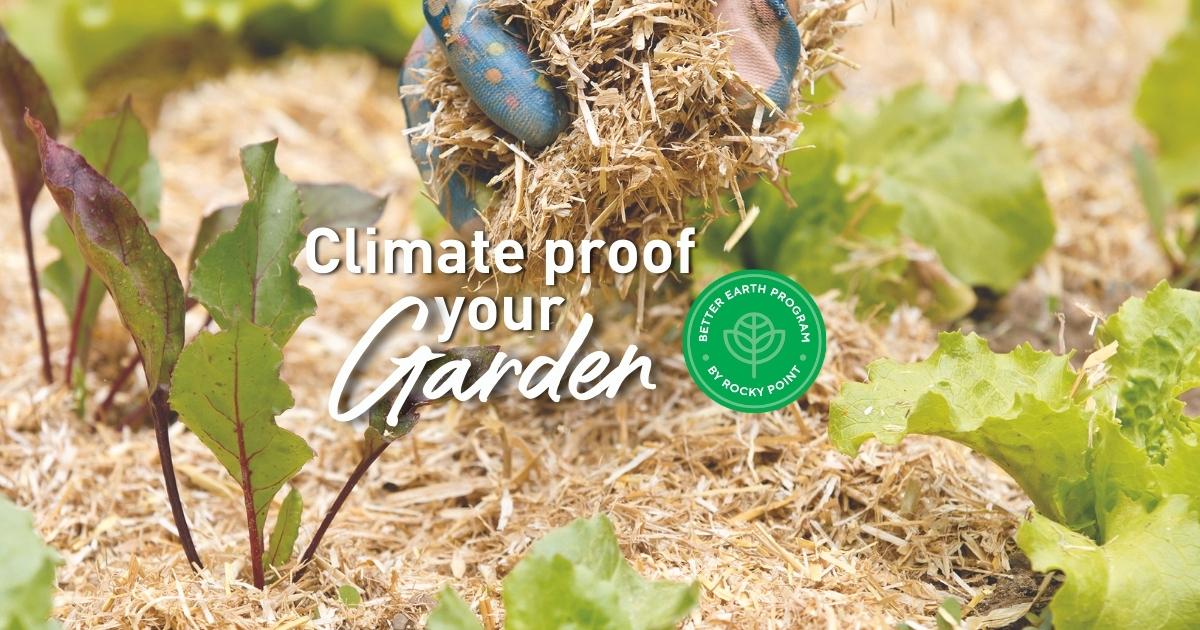Drought and flood, from one extreme to another, that's just gardening in Australia, right?
With weather extremes becoming the norm, getting your garden ready with whatever mother nature has up her sleeve this season is the key to having a garden that not just survives but thrives.
The Big Dry
For the extended dry summer that has been forecast, it's crucial to take proactive measures to ensure your garden can withstand the harsh conditions. One effective strategy is to store water in your soil, allowing your plants to access it during the dry spells. To achieve this, it's essential to incorporate good levels of organic matter into your garden beds.
Why do we say to add organic matter?
Organic matter such as Rocky Point ActivGrow Soil Improver and Rocky Point Cow Manure Plus acts as a sponge, absorbing and retaining water, preventing it from evaporating too quickly. By digging through your garden beds and mixing in organic matter, you create a reservoir of moisture that your plants can tap into when they need it most. Another important step in preparing your garden for the Big Dry is to apply thick mulching on top of your soil.
What does mulch really do?
Mulch acts as a protective layer, shielding the soil from the scorching sun, reducing evaporation, and maintaining a more stable moisture level. It also helps to suppress weed growth, preventing these unwanted plants from competing with your garden for water and nutrients. Organic mulch, such as straw or wood chips, is an excellent choice as it gradually breaks down, adding valuable nutrients to the soil.
In addition to these measures, it's important to adjust your watering practices during times of drought. Instead of shallow, frequent watering, it's more beneficial to water deeply and less frequently. This encourages the roots of your plants to grow deeper, making them more resilient and able to access water from lower soil layers. By watering in the early morning or late evening, you also minimize water loss through evaporation.
Preparing your garden for the Big Dry requires careful planning and proactive actions. By implementing these strategies, you can ensure that your garden not only survives but thrives, even in the face of extreme weather conditions. With proper water storage in your soil, the incorporation of organic matter, and the application of thick mulching, your garden will have the resilience it needs to withstand the challenges that Australia's unpredictable climate throws its way.
Drought proofing in a snapshot
- Work compost and cow manure into the soil around your plants.
- Mulch the top of your garden beds and pots.
- Choose plants that are drought tolerant.
- Cluster your potted plants together to create a more humid microclimate.
- Cut down on mowing and fertilise your lawn less.
- Consider letting your lawn go dormant.
- Apply re-wetting agents to ensure every drop of water infiltrates the soil profile and stops hydrophobia.
- Use water crystals at planting to hold moisture around plant roots.
- Choose potting mixes that will hold onto moisture at the roots using ingredients like Coir and Coir Fibre. Coco Pro Premium Potting Mix is a great mix with up to 40% Coir ingredients.
- Regular applications of liquid seaweed will strengthen the cell walls of your plants, making them more tolerant of drought and high temperatures.
The Big Wet
At the other end of the scale, in recent years we have experienced unprecedented levels of rainfall, leading to extensive flooding in various locations around the country. There's not a lot you can do to prevent flooding except try to divert water away, if possible, via sandbagging and creating swales and gutters around your garden. This may work for mild flooding and heavy downpours but not for larger riverine and dam release-related floods.
Snapshot of the flood aftermath:
After the water has subsided:
- Aerate soil gently by using a garden fork and adding course material, such as Rocky Point Coarse Sand.
- Do not walk and compress sodden soil as this will damage the soil structure.
- Prune damaged or wilting plants carefully.
- Apply coarse mulch, like Rocky Point Pine Bark to the flooded affected area after the water has gone.
- Remove any silt that has settled on the foliage and stems of plants with a pressure washer.
- Add microbes in the form of liquid seaweed, compost and manures, for all three try Rocky Point ActivGrow Soil Improver & ActivGrow Fertiliser Pellets.
- Monitor plants for fungal diseases and apply an organic fungicide if needed.
- Do not fertilise stressed plants.
- If heavy metal contamination has occurred, you may wish to send soil samples for testing to determine the extent of the issue. Over time, exposure to UV sunlight can aid in the breakdown and removal of sewage contaminants such as bacteria, viruses, and faecal coliforms.
_MEB.png?width=842&height=596&name=RP_HorizontalColour(R)_MEB.png)



